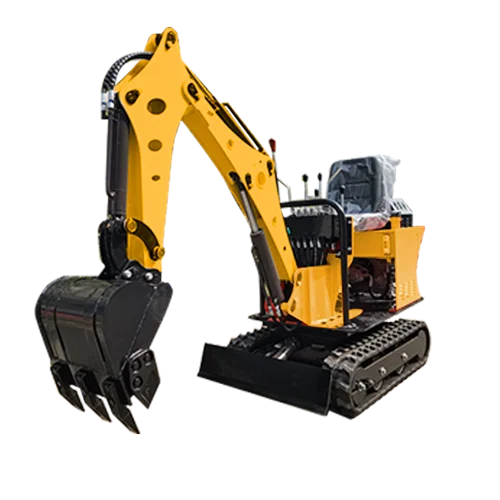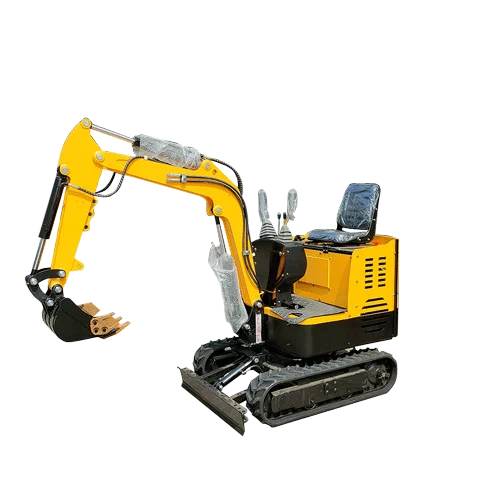Introduction

Operating a little excavator might seem straightforward at first glance, especially given its smaller size compared to larger construction equipment. However, this simplicity can sometimes lead to complacency, making it easy to overlook potential safety hazards. Regardless of your experience level, whether you’re a seasoned operator with years of practice or just starting out in the field, safety should always remain the paramount concern.
In the fast-paced environment of construction sites, where deadlines loom and tasks demand efficiency, it’s crucial to prioritize safety above all else. Every operation, no matter how routine it may seem, carries inherent risks that must be carefully managed to prevent accidents and ensure the well-being of everyone involved.
In this comprehensive blog post, we aim to delve deep into the nuances of safely operating a little excavator. We’ll explore not only the fundamental principles but also the practical tips and best practices garnered from industry expertise. Whether you’re seeking to refresh your knowledge or embark on a journey to learn the ropes, this guide will equip you with the essential information needed to navigate the world of little excavator operation with confidence and vigilance.
So, join us as we unravel the intricacies of operating these versatile machines and discover the five must-know tips that will safeguard your well-being and enhance the efficiency of your excavation endeavors. Let’s dive in!
Conduct Proper Pre-Operation Checks
Before starting any excavation work, it’s crucial to conduct thorough pre-operation checks on your little excavator. This includes inspecting the machine for any visible damage, leaks, or loose components. Check the fluid levels, such as hydraulic oil, coolant, and fuel, and ensure they are at the appropriate levels. Refer to the manufacturer’s manual for specific guidelines on pre-operation checks.
Familiarize Yourself with the Controls
Understanding how to operate the controls of your little excavator is essential for safe and efficient operation. Take the time to familiarize yourself with the various levers, pedals, and switches, and their functions. Practice operating the excavator in a controlled environment before tackling more challenging tasks. Proper control of the machine will not only enhance safety but also improve productivity.
Maintain Stability on Uneven Terrain
Little excavators are often used in environments with uneven terrain, which can pose stability challenges. It’s vital to maintain stability to prevent tip-overs and accidents. Always operate the excavator on level ground whenever possible. If working on slopes or uneven surfaces, use caution and avoid sudden movements. Engage the machine’s stabilizers or outriggers if equipped, and never exceed the recommended slope limits specified by the manufacturer.
Practice Safe Digging Techniques
Excavating safely requires employing proper digging techniques to avoid hazards such as cave-ins and utility strikes. Before digging, locate and mark any underground utilities to prevent accidental damage. When excavating, position the machine at a safe distance from the edge of the trench and avoid overloading the bucket. Use gradual, controlled movements to scoop and dump material, and never operate the excavator beyond its capacity limits.
Stay Aware of Surroundings
Maintaining situational awareness is crucial when operating a little excavator, especially on busy construction sites. Always be mindful of your surroundings and watch out for obstacles, other workers, and overhead hazards. Use mirrors and cameras, if available, to expand your field of vision. Communicate with ground personnel using hand signals or two-way radios to coordinate movements and ensure everyone stays safe.
Here’s a sample table outlining a daily checklist for pre-operation checks on a little excavator:

| Pre-Operation Checklist | Action Required |
|---|---|
| Visual Inspection | Inspect for visible damage, leaks, or loose components |
| Fluid Levels | Check hydraulic oil, coolant, and fuel levels |
| Controls Functionality | Test levers, pedals, and switches for proper operation |
| Stabilizers/Outriggers | Ensure stabilizers or outriggers are deployed (if equipped) |
| Safety Devices | Check seatbelt, emergency stop, and other safety features for functionality |
FAQ
Q: What should I do if I encounter an obstacle while excavating?
A: Stop the machine immediately and assess the situation. Clear the area of any obstacles or debris that may impede safe operation.
Q: How often should I perform maintenance on my little excavator?
A: Regular maintenance is essential for keeping your excavator in top condition. Follow the manufacturer’s recommendations for maintenance intervals and schedule routine inspections to address any issues promptly.
Conclusion
Operating a little excavator safely requires a combination of proper training, equipment knowledge, and situational awareness. By following the five must-know tips outlined in this blog post and adhering to safety protocols, you can minimize the risk of accidents and ensure a successful excavation operation. Remember, safety always comes first.

